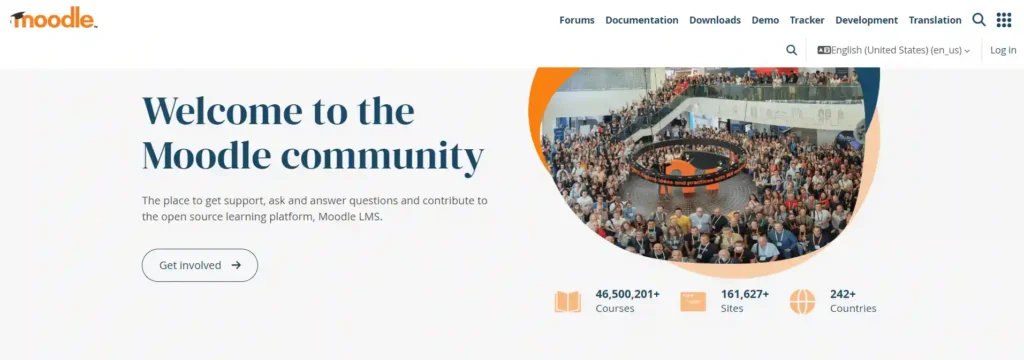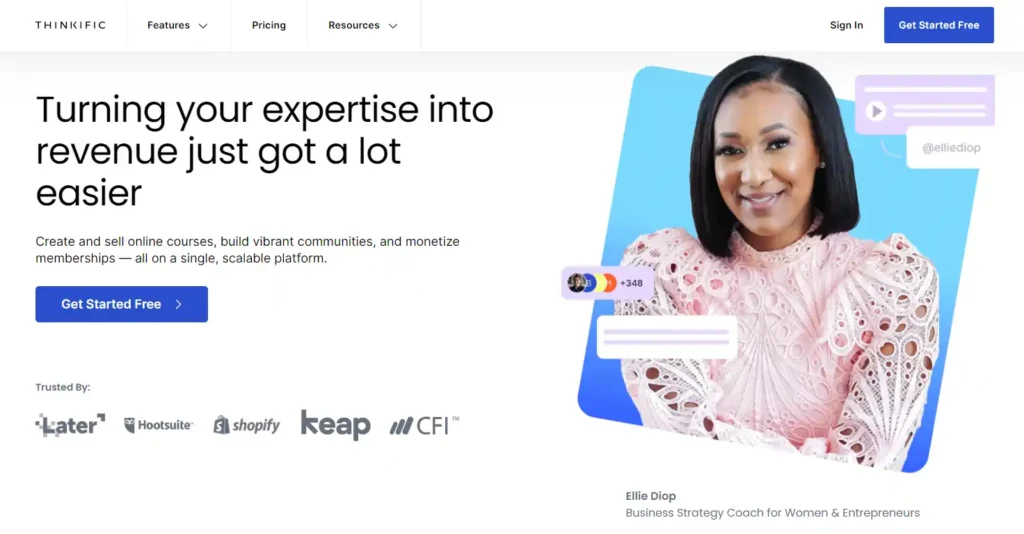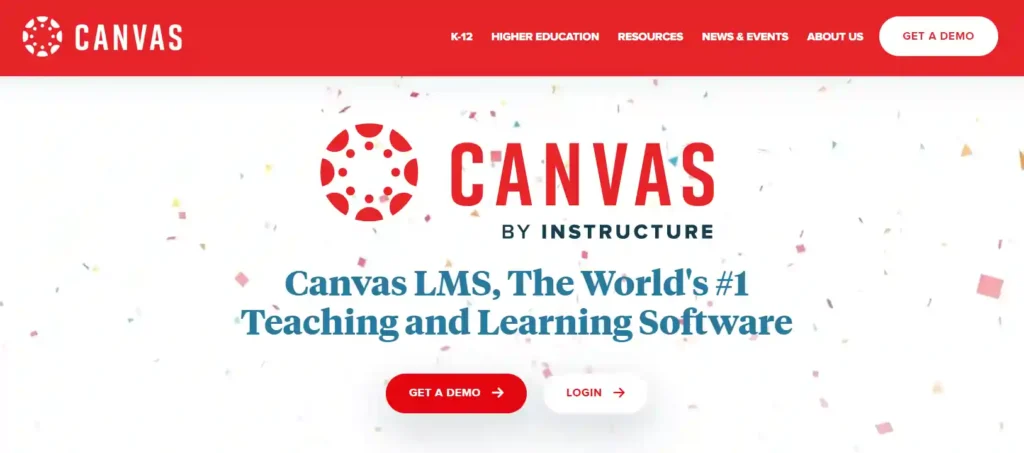With the rapid growth of eLearning in Australia, more and more organizations are adopting learning management systems (LMS) to deliver training online. But with so many options, how do you choose the right LMS? In this article, we cut through the noise to bring you the top Learning Management Systems in Australia used by businesses.
Whether you need a simple cloud-based system or a full-featured enterprise solution, we’ve got you covered. We’ll explore both local and international tools that offer the features, integrations, and support you need to create and deliver exceptional learning experiences.
From household names like Moodle and Teachable to up-and-comers like LearnUpon and Absorb LMS, we compare the leaders in the Australian LMS market. We’ll discuss key factors like pricing, course authoring, mobile access, gamification, analytics, and more. Read on for profiles of the top 10 LMS options to propel your online training in Australia.
What are Learning Management Systems?
Learning management systems (LMS) are software applications used to administer, document, track, report on, and deliver educational courses, training programs, and learning and development programs.
Learning Management Systems helps organizations and institutions create and deliver virtual learning experiences to learners in an organized and efficient manner. LMS platforms provide the technology infrastructure to train employees, customers, students, partners, or other audiences.
Why Should I Try Learning Management Systems?
The key is to evaluate your specific business and training requirements and match them to the strengths and limitations of each platform.
Best Learning Management Systems in Australia 2024
| LMS | Pros | Cons |
|---|---|---|
| IMC Learning Suite | Comprehensive features, highly customizable, scalable, good analytics | Expensive, complex |
| Moodle | Free and open source, customizable, great community support | Steep learning curve, outdated UI, not user friendly |
| LearnUpon | Easy to use, good UI/UX, affordable pricing | Limited customization capabilities |
| Teachable | Easy course creator, good analytics, unlimited video hosting | Expensive pricing model |
| Thinkific | Intuitive course builder, great analytics, live streaming | Transaction fees apply |
| Absorb LMS | Cloud-based, mobile access, analytics | Expensive |
| Canvas | Feature-rich, strong mobile and analytics | Complex, expensive |
| Edmingle | Social and informal learning features, API integration | Custom pricing model |
| Easy LMS | Easy to use, budget friendly | Limited features |
1. IMC Learning Suite

The IMC Learning Suite is a comprehensive Learning Management System (LMS) designed for the planning, management, implementation, and control of personnel development processes. It supports a variety of learning methods, including classroom, digital, social, on-the-job, blended, and mobile learning. The platform is highly customizable, scalable, and integrates well with existing IT ecosystems. It also meets strict security standards and provides global support.
Pricing: Custom quote based on requirements
2. Moodle

Moodle is a free, open-source LMS that supports a wide range of educational methods. It allows educators to create customizable online courses and provides tools for managing and tracking student progress. Despite its robust features, Moodle has a steep learning curve, and its user interface is often considered outdated. However, it has a strong community support system.
Pricing: starts at $120 per year.
3. LearnUpon

LearnUpon is an LMS designed to streamline and centralize training management across companies. It offers a user-focused experience with its simple and intuitive interface. The platform allows for quick setup, automated workflows, and the creation of diverse courses without technical expertise. It also provides comprehensive reports and leverages industry-leading security and privacy capabilities.
Pricing: starts at $549 per month.
4. Teachable

Teachable is a cloud-based platform that allows high-volume organizations to create, market, and sell online courses. It offers a range of features designed for flexibility and ease of use, including course outline generation, automated quizzes, and subtitle and translation services for uploaded videos. It also provides flexible payment options, fraud protection, and marketing tools. Teachable is known for its user-friendly interface and robust analytics.
Pricing: Starts at $29 per month. Transaction fees apply.
5. Thinkific

Thinkific is a platform for entrepreneurs to create, market, and sell online courses. It offers interactive tools, innovative course creation, and the ability to build revenue through online education. Thinkific supports multiple content formats and integrates with various services for a comprehensive teaching and learning experience. It is known for its user-friendly interface and robust analytics, making it a popular choice for subject matter experts and educators.
Pricing: starts at $49 per month.
6. Absorb LMS

Absorb LMS is a cloud-based learning management system that offers a unified platform for training and development. It features smart administration, deep branding capabilities, and 24/7 customer support. Absorb LMS is known for its intuitive user experience, scalability, and robust reporting tools. It supports SCORM compliance, xAPI, and HTML5 content, and offers integrations with leading technology platforms.
Pricing: Starts at $443 per month. Custom quotes available.
7. Canvas

Canvas is an LMS that simplifies course management, communication, and student connection. It is designed to make teaching and learning easier for all educational levels. Canvas offers a user-friendly interface, mobile support, and integrations with favorite school apps. It is reliable, secure, and widely adopted in the education sector, from primary education to higher education and beyond.
Pricing: Contact for quote.
8. Edmingle

Edmingle is a unified platform that helps training and learning businesses build courses, scale operations, and manage their business without the need for extensive technology. It supports multiple content formats, deep Zoom integration for live sessions, and offers white-labeled solutions with personalized domains and mobile apps. Edmingle is designed to enhance learner performance and business growth.
Pricing: Contact for quote.
9. Easy LMS

Easy LMS is a budget-friendly LMS tailored for corporate training needs. It offers easy course distribution and tracking features, making it suitable for businesses looking to efficiently manage their training programs. While it is known for its ease of use, it may have limited features compared to more comprehensive LMS solutions. It is a good option for companies seeking a straightforward and cost-effective training solution.
Pricing: Starts at $24 per month.
Selecting an LMS? Key Ingredients You Can’t Overlook!
- Needs Analysis: Clearly identify your organization’s learning and development goals, target audiences, content types, etc. This will inform your requirements.
- Requirements Definition: Based on the needs analysis, define your must-have and nice-to-have requirements for features, integrations, support, etc. Prioritize these requirements.
- Product Evaluation: Research LMS options in the market that meet your requirements. Shortlist 3-5 options and thoroughly evaluate them. Request demos, free trials, peer reviews/case studies.
- Total Cost of Ownership: Analyse both recurring costs (subscriptions, hosting fees) as well as one-time costs (implementation, migrations, customizations) for total cost.
- Scalability: Assess if the LMS can scale with your expected growth in users, content, traffic over 3-5 years.
- Ease of use: Evaluate the end user experience and administrator experience. Complex systems lead to low adoption.
- Customization: See if the system allows branding, UI configurations, custom fields/objects, API access, integrations etc.
- Support & Upgrades: Review the vendor’s technical support, customer service track record, and their roadmap for product upgrades.
- Security: Requirements like encryption, data centres, access controls, authentication etc. based on your compliance needs.
FAQs related to Learning Management System in Australia
Should I choose a cloud or self-hosted LMS?
Cloud LMS options remove hosting burdens while self-hosted LMS allows more customization and data control.
Can I import my existing training?
Most LMS platforms support importing SCORM or AICC-compliant courses from other systems.
What features should an LMS have?
Key LMS features include course authoring tools, assessments, mobile access, analytics, gamification, and integrations.
How can I determine if an LMS vendor provides adequate support and training resources?
Quality LMS providers offer thorough onboarding processes, easily accessible support tickets, extensive knowledge bases and documentation, regular product updates and training webinars, active user forums and communities, and designated customer success managers. Assess reviews and talk to current customers about the vendor’s level of service.
How flexible are the assessment creation features?
Robust LMS platforms allow assessments like multiple choice questions, matching, fill in the blanks, essays, assignments, quizzes, exams, surveys, and 360 reviews. Review if tests can be auto-graded, randomized, timed, proctored, repeated, and securely delivered.
What analytics insights are provided on learning programs?
Look for LMS dashboards tracking enrollment, progress, test scores, content effectiveness, learner demographics, completion rates, certification status, and talent benchmarks. The depth of reporting varies greatly so align analytics to your evaluation strategy.
RECOMMENDED READING FROM COURSEBAY
Summing Up
The learning management systems will facilitate optimal learning experiences tailored to your student’s needs. By thoroughly evaluating your institutional objectives and requirements, you can select the platform that enables maximum pedagogical effectiveness and enhances educational outcomes. Key criteria to assess include integration with existing infrastructure, analytics capabilities, support options, and total cost of ownership.
Additionally, the ability to customize and scale the system in alignment with evolving academic priorities is essential. We would be pleased to provide further guidance on matching specific LMS solutions to your growth strategy and instructional goals.






